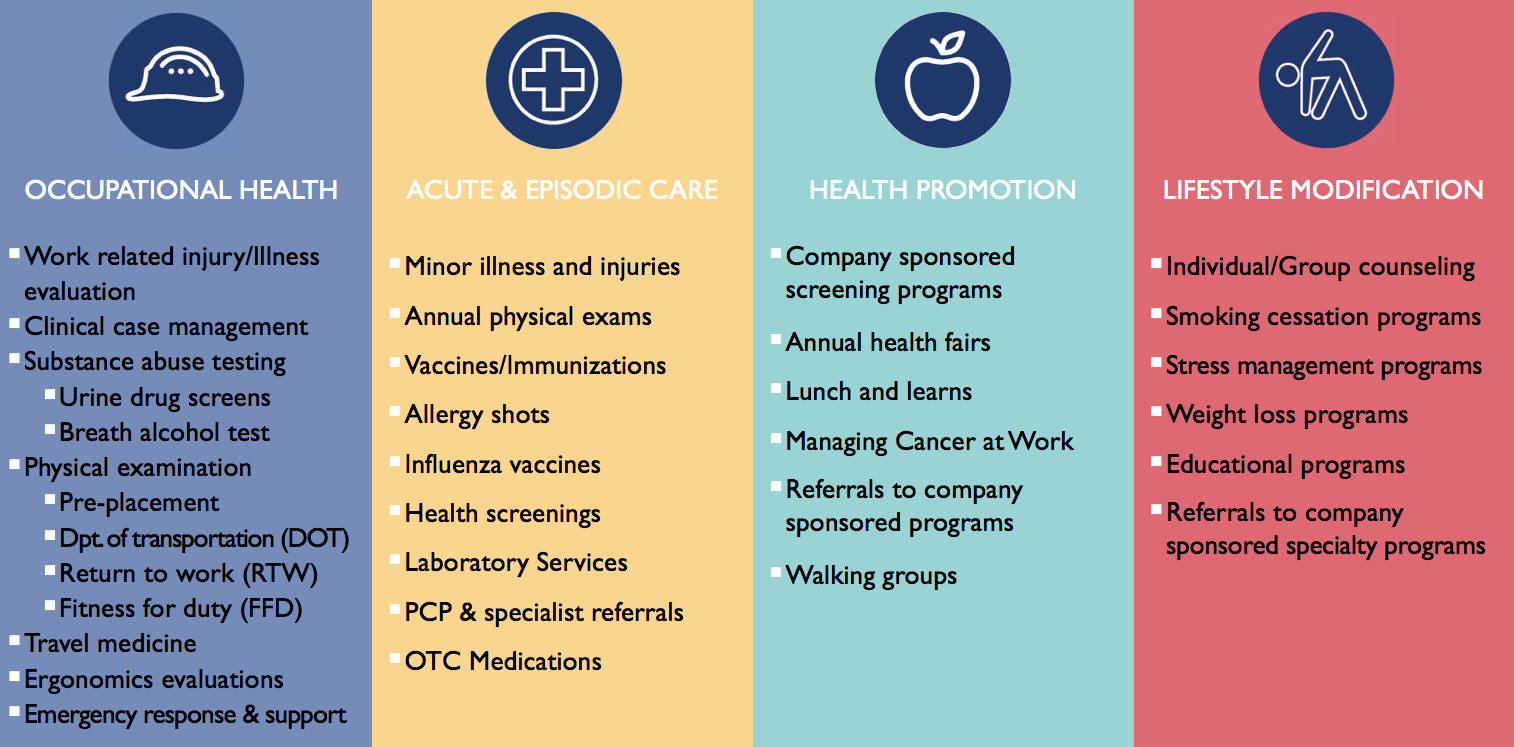Onsite Clinic Market Continues to Evolve
Employers search for ways to maintain a healthy workforce while reducing the associated costs, onsite clinics are a viable resource for managing chronic conditions and promoting wellness.
A couple of years ago, Harvard Medical School researchers noted that a 20-minute doctor’s visit consumes, on average, slightly more than two hours of an employee’s work day. That includes time spent traveling to and from the doctor’s office and waiting to be seen. The cost to the employee: about $43 in lost work time, which isn’t always compensated. The researchers noted that employers, too, pay for their employee’s doctor’s visit, with lost productivity.
Onsite health clinics are evolving to meet this and other challenges faced by employers, who are eager to support a healthy workforce while keeping down health care costs. A 2015 survey by benefits consultant Mercer found that nearly 30 percent of companies with more than 5,000 workers have onsite or near-site clinics. And in 2016, more than 40 companies on Fortune‘s list of the 100 Best Companies to Work For were offering their employees onsite health care.
Onsite clinics are becoming a viable corporate resource for helping employees manage their chronic conditions. For example, many people with asthma, or cardiovascular disease or diabetes don’t consistently follow their doctor’s care plan, which includes taking their medications as prescribed.
The Johns Hopkins clinicians, working at onsite clinics across the country, don’t replace an employee’s primary care physician, but rather actively engage the employee, helping him or her stick to their prescribed care plan. If that care plan requires an employee to monitor their blood pressure and take blood pressure medication daily, then just having a clinician right at the workplace greatly improves compliance, without the employee losing two hours of his/her workday.

Johns Hopkins onsite clinics also actively engage employees, working with a company’s human resources staff to offer evidence-based intervention programs that have a track record of success in areas like diabetes prevention and diabetes self-management. One program—Managing Cancer at Work—provides staff, managers and their families support and a wide range of information wherever they are on their cancer journey.
Learn more about Johns Hopkins onsite clinics and health and wellness programs, and how they can help your organization.
